A historic effort: Restoration nearly finished at Conewago Chapel
The oldest Catholic church constructed of stone in America is nearing completion of a years-long restoration process to bring the church, located just outside of Hanover, back to how it looked in the late 1800s.
What first started as a special collection for the restoration of the Basilica of the Sacred Heart of Jesus, also known as the Conewago Chapel, over a decade ago led in 2021 to the start of the restoration project led by current Pastor Dwight Schlaline.
Renovations included the restoration of 1800s paintings by Franz Stecher and Constantino Brumidi, as well as revealing concealed wall decorations, and restoring the painted sculptures that had been turned monochrome.
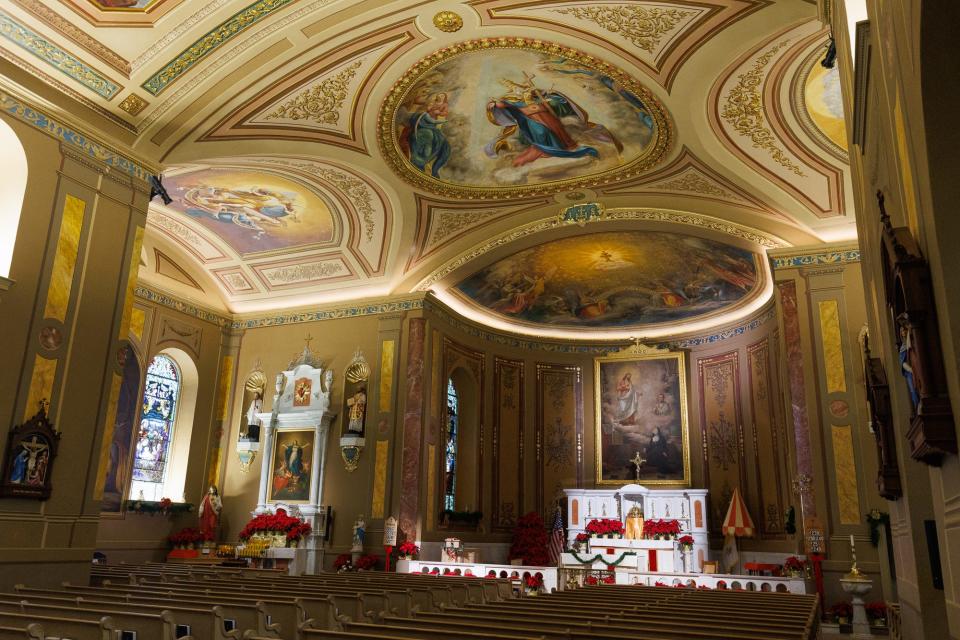
The process, years in the making, has brought much of the church back to the condition that was seen in photographs dating from the late 1800s, said Schlaline in an interview at the church. The church underwent renovations in the 1960s, painting over much of the decorations that had been on the walls.
When Schlaline became the pastor of the church in 2020, he learned that the previous pastor had been working on restoring the sacred heart painting, having gotten a quote from a restoration company.
During that process, Schlaline had spoken with the owner of the restoration company about restoring some of the peeling walls of the church, who suggested that they restore the church to its former state.
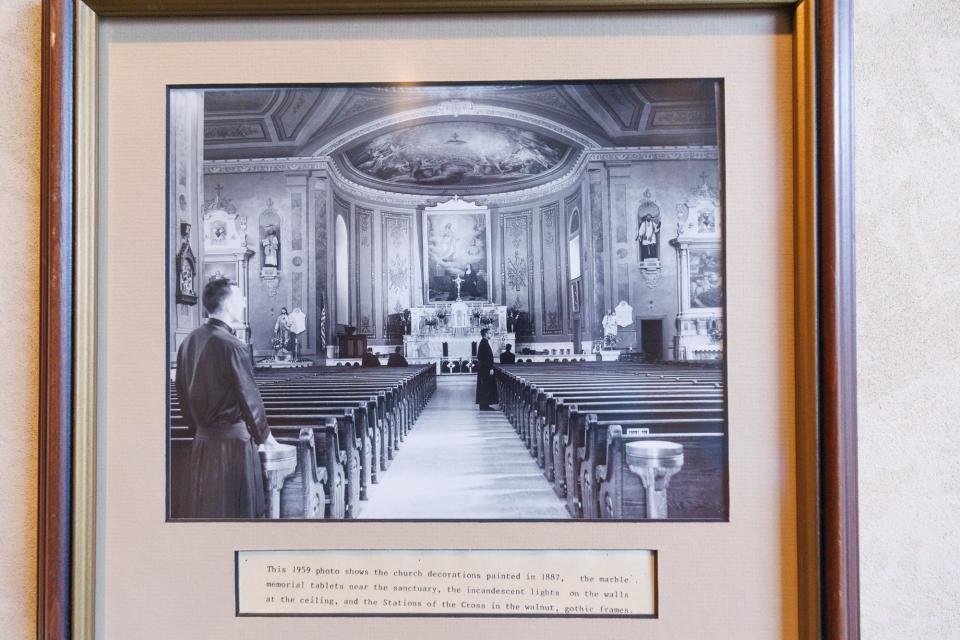
That led to the most recent initiative, which worked on meticulously removing the outer layers of paint concealing the former decorations, as well as restoring them from any wear and tear.
The historic nature of the entire church, including the renovations done in the 1960s, meant that none of those decisions could be taken lightly.
"You have to make some choices," said Schlaline. "Everything's historic."
One of those choices involved a still-concealed painting of the last supper by Franz Stecher from 1851.
That painting, behind the altar of the church, is concealed under several inches of plaster, Schlaline said. While Schlaline would have liked to have been able to restore the painting, church leaders had to decide to leave it buried in the wall, as it was not currently salvageable.
Schlaline hopes that, perhaps some day, better technology would lead to a way to more easily salvage the painting without damaging it further.
The painting remains behind the wall along with another painting, "The Apparition of our Lord to Saint Margaret Mary," painted by Constantino Brumidi. Brumidi is known for painting the "The Apotheosis of Washington" fresco in the Capitol dome.
"We're figuring that, maybe 100 years from now, they may come along and find some way of technologically preserving both," he said.
Along with the painting and wall decorations, another facet of the restoration process were the many sculptures around the church.
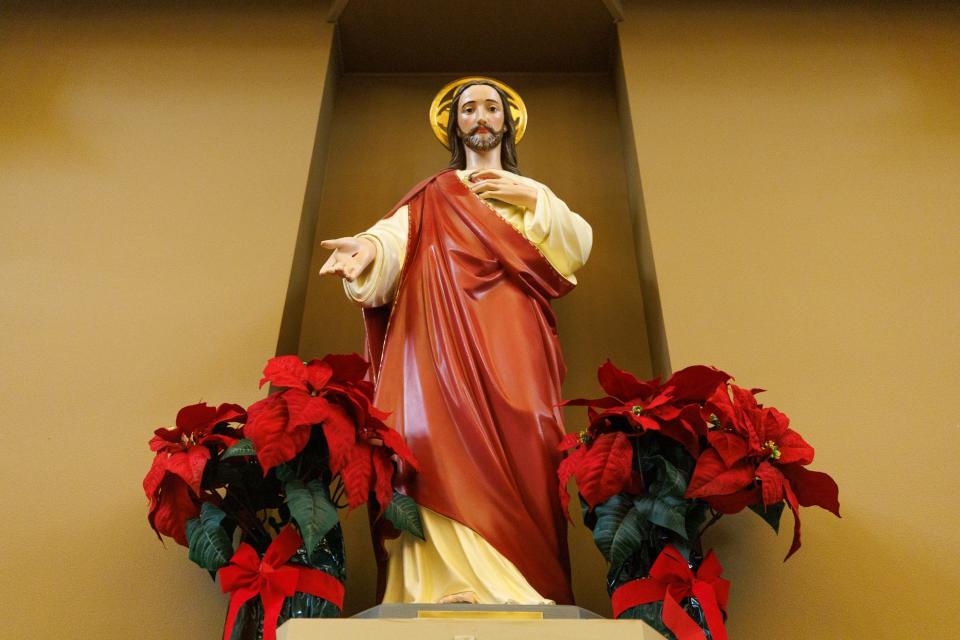
During the 1960s renovations, the sculptures that had been painted were all turned monochrome. For the recent restoration process, the restoration company painted the sculptures to match how they originally looked prior to the 1960s.
That included several of the "stations of the cross" in the church, which had also been turned monochrome and had the frames removed. Schlaline was able to find many older parts, such as those frames, in the barn of the church, left undisturbed for decades.
After some polishing and restoration, the stations of the cross were able to be restored to how they originally looked in the late 1800s.
The whole process was extensive, and required scaffolding to be erected in the church for many months.
Despite the construction, the congregation was excited for the project, Schlaline said.
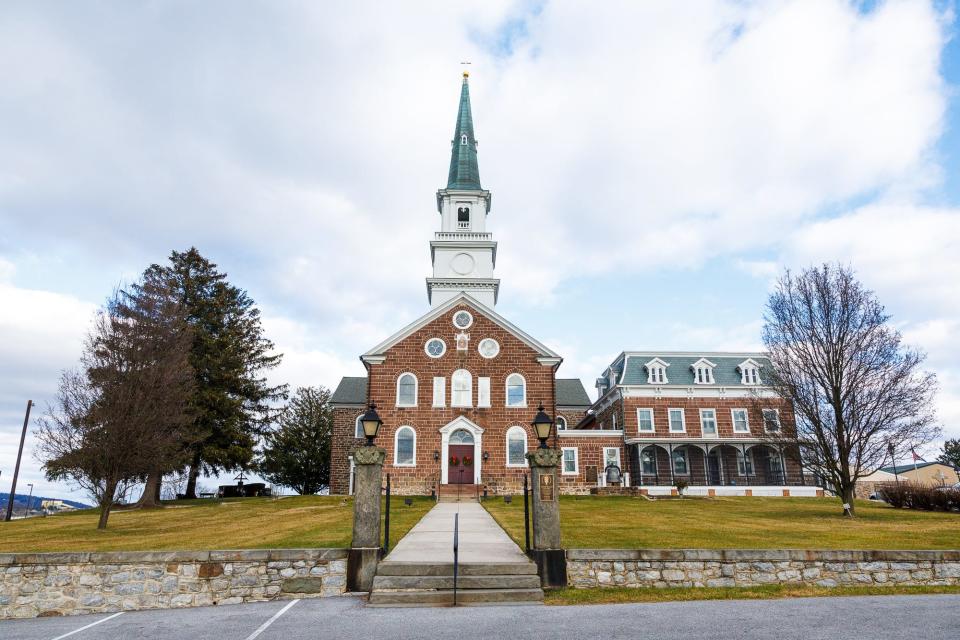
"I don't think I heard a single person complain about it," said Schlaline. "They knew that it was necessary, and people wanted to do it."
Along with being funded by the congregation of the church, the church was also able to get grants from local organizations, such as the Warehime Foundation.
That, along with several other large donations, meant that the church did not need to incur any debt for the project.
The final stage of the renovations, which will come next, will involve restoration of the pews and flooring. Currently, the church was working through selecting a company for the pews, and had samples on display for parishioners to examine.
Long history
The Conewago Chapel itself, while it is being restored to how photographs depict it over 150 years ago, dates back to before the American revolution. The church is older than the Mason-Dixon Line, Schlaline notes, and was once in a gray area between the Pennsylvania and Maryland colonies.
"This area was kind of a no-man's land," said Schlaline, "because it was unclear if it was Maryland or Pennsylvania."
That attracted people who wanted to be "off the grid," Schlaline says, which included Catholics, who had been persecuted by many groups.
The earliest days of the church itself involved a Catholic priest holding mass in the 1730s near the eventual site of the Conewago Chapel. Then, Schlaline said, a log chapel was built nearby in 1741.
The cemetery was started in 1752, when Dudley Diggs was buried at the site. Diggs died during fighting between Maryland and Pennsylvania over the location of the Mason-Dixon line, according to Schlaline's research.
By 1784, the Conewago congregation had the largest Catholic parish in America, with over 5,000 parishioners at one point, Schlaline said.
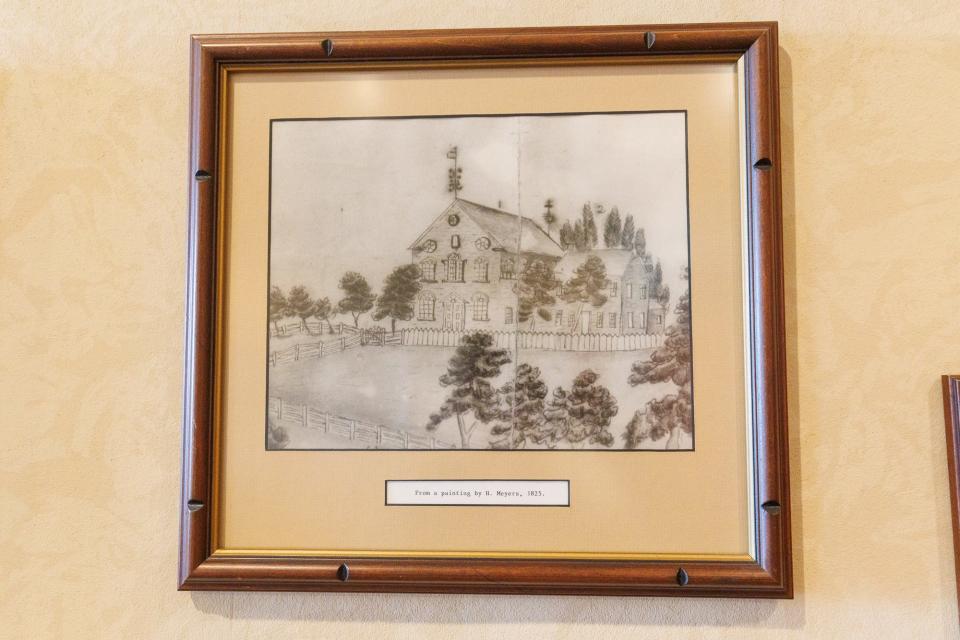
When the Jesuits decided to start their own university in the late 1700s, the choice was between Conewago and the eventual site of Georgetown University, though the Jesuits would ultimately choose the latter option.
In 1787, the log chapel was taken down and the first portion of the existing Conewago Chapel was built. The transepts were then added in 1851, and then the spire was built in 1873.
in 1962, the church was declared a basilica by Pope John XXIII, an honorary title for a historically significant church.
Harrison Jones is the Hanover reporter for the Evening Sun. Reach him at hjones@gannett.com
This article originally appeared on Hanover Evening Sun: Restoration nearly finished at historic Conewago Chapel

